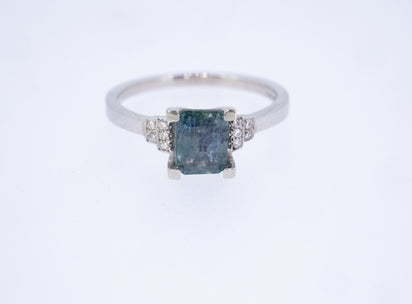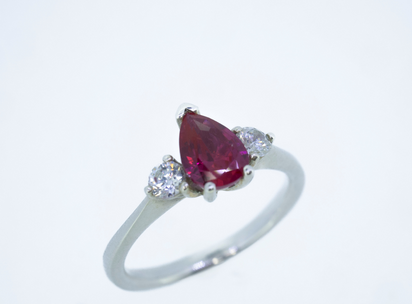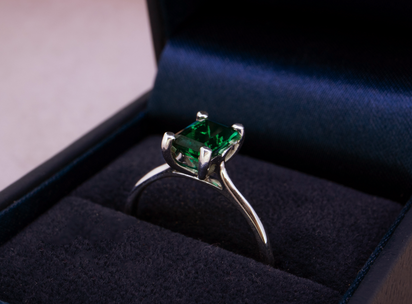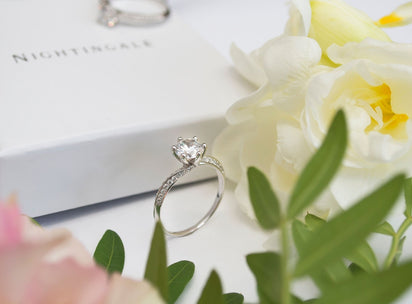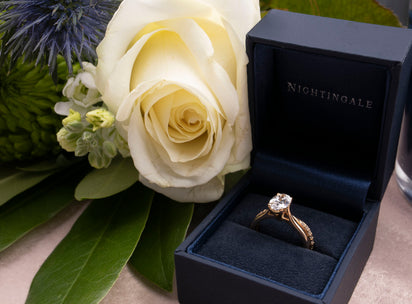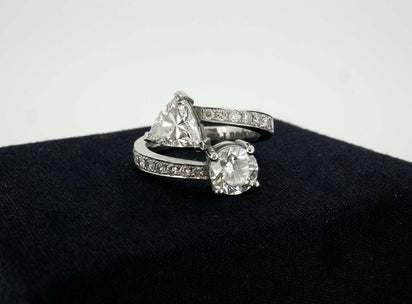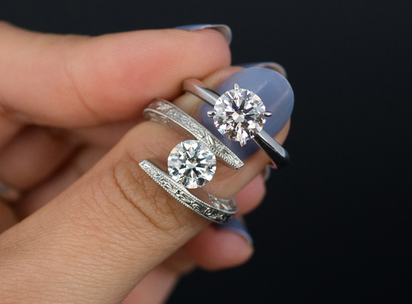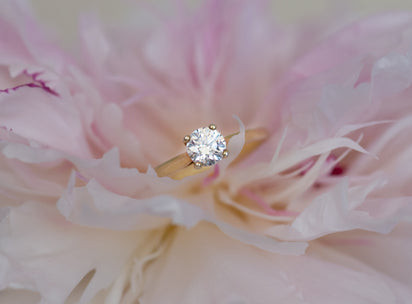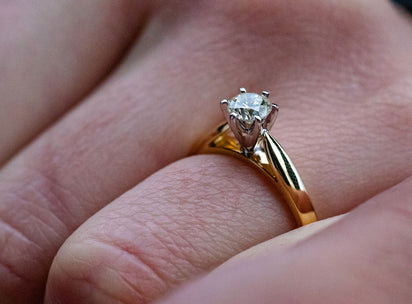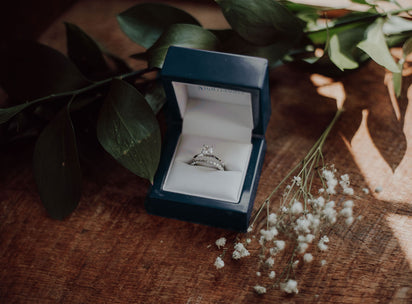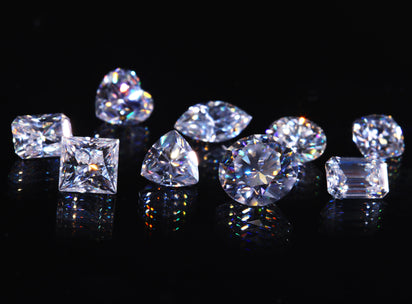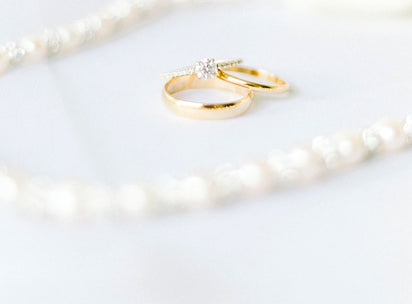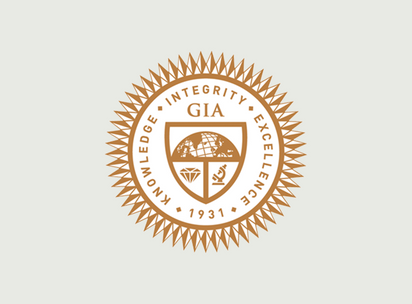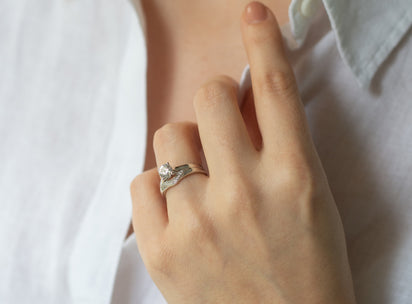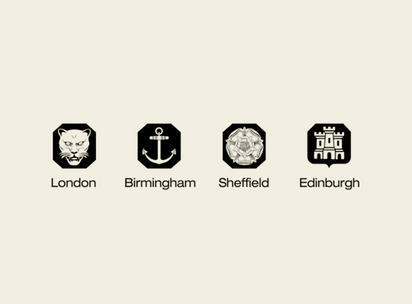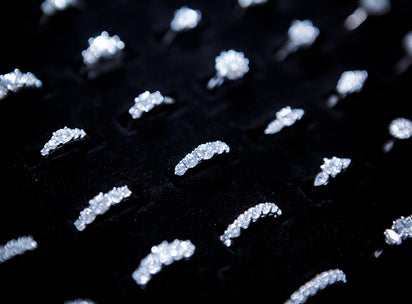Nightingale coloured diamonds
In addition to our comprehensive collection of mined and lab grown diamonds Nightingale can supply an outstanding collection of coloured diamonds loose or set within a bespoke or finished piece of Nightingale jewellery.
What is a coloured diamond?
Coloured diamonds have the same crystalline structure colourless diamonds but are much rarer than colourless ones: approximately 1 in 10,000 diamonds is considered to be a coloured diamond.
What colours are available?
More than 300 diamond colours have been identified in an infinite number of shades. The most popular colours for diamonds are pink, yellow, blue and green. Green diamonds are extremely rare as they contain clustered nitrogen atoms or in some cases no nitrogen atoms because they have been exposed to nuclear radiation during their growth.
How is colour determined?
Colour is the most influential factor in valuing a coloured diamond. Colour is ascertained based on the following attributes:
Hue: Hue refers to the dominant colour of the diamond. It can be affected by the presence of 'tints', which are additional hues within the stone. The hue of a stone with no tints present is described as a pure primary colour, for example, 'a pink diamond'. If a pink diamond has a purple tint, it would be described as 'a purplish-pink diamond'.
Tone: Tone refers to how light or dark a stone appears. This is determined by how much brown, black, grey or white is present.
Saturation: Saturation refers to the intensity of the hue within the stone. The saturation of lightly toned diamonds can range from ‘light’ to ‘intense’ to ‘vivid’ in description. For darker diamonds, descriptions range from ‘dark’ to ‘deep’.
Distribution: Distribution refers to how evenly spread the colour is throughout a diamond.
Professional gemologists assess these variables and produce a natural coloured diamond grading report, which is used to value the natural coloured diamond.
The 4C’s are also assessed on coloured diamonds however, in the GIA grading report the colour aspect is detailed further by describing:
Origin: Describes whether the stone is a natural or treated colour.
Grade: Hue, tone and saturation are all considered when grading colour.
Distribution: how evenly spread the colour is throughout the diamond.
Why should I buy a coloured diamond?
Customers who invest in coloured diamonds value the rarity and prestige of these exquisite stones. Whilst coloured diamonds are significantly more expensive than colourless diamonds their value may increase much quicker year on year. Demand for coloured diamonds is continuously growing, whilst supplies are rapidly falling. Fewer natural coloured diamonds are found every year and as a result prices are rising significantly.
What is the difference between buying coloured and colourless diamonds?
Because of the rarity of fancy diamonds it is hard to find high clarity graded coloured diamonds and colour is more important than cut and the more saturated the colour of the diamond, the less important clarity will be.
How much more expensive are coloured diamonds?
Depending on the availability of these rare stones a 0.73 carat fancy pink diamond would be approximately £22,000 for a fancy light to £65,000 for a fancy vivid. (Prices valid December 2016)
How are coloured diamonds graded?
Coloured diamonds are graded on the ‘fancy scale’ that ranges from fancy light, which is a simple hint of colour through to fancy deep. Fancy deep diamonds are the rarest and most valuable coloured diamonds.
Diamonds are classified following what happened to their structure during the crystallization process. They are divided into two groups: type I and type II, the second one being by far the rarest.
Type I Diamonds
These are diamonds that absorbed a detectable quantity of nitrogen atoms, which absorb blue light.
Type Ia: If the nitrogen atoms are clustered together within the carbon lattice, then the diamond is said to be a Type Ia diamond. Because these diamonds absorb blue light, they can have a pale yellow colour. 98% of diamonds are Type Ia.
Type Ib: If the nitrogen atoms are evenly spread throughout the carbon lattice, then the diamond is said to be a Type Ib diamond. These diamonds absorb green light as well as blue light, and have a darker colour than type Ia diamonds. Less than 0.1% of diamonds belong to Type Ib.
Type II Diamonds
Are diamonds that absorb no, or very few, nitrogen atoms.
Type IIa: These diamonds are considered the "purest of the pure" as they contain minimal amounts of elements. An imperfect carbon lattice will make the diamond absorb some light, which will give it a yellow, brown or even pink or red colour. 1-2% of diamonds belong to Type IIa.
Type IIb: These diamonds contain no nitrogen but they do contain boron, which absorbs red, orange and yellow light. These diamonds usually appear to be blue, although they can also be grey or nearly colourless. A part of naturally blue diamonds belong to Type IIb, which makes up 0.1% of all diamonds.
